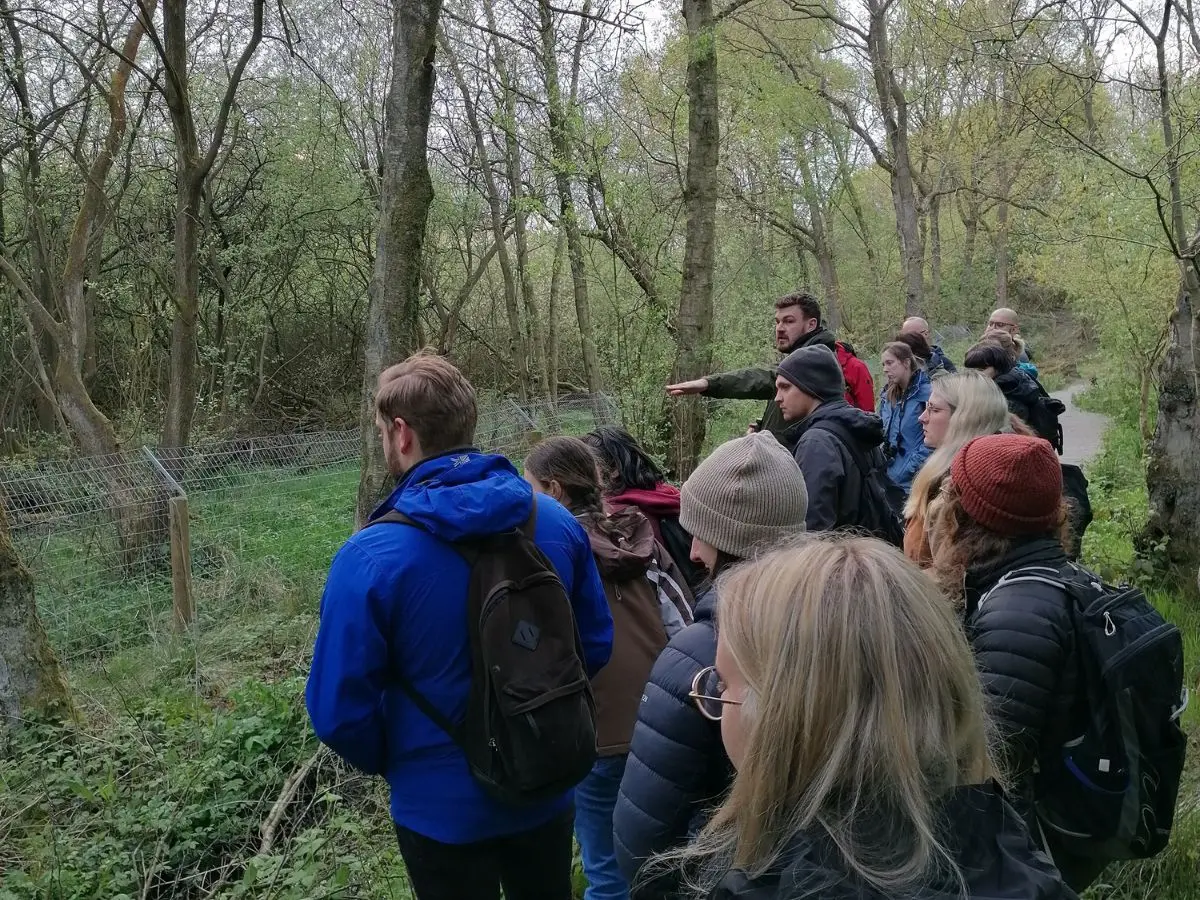Our Ecology teams had a joint training trip at Delamere Forest on 4th May, for a tour led by Cheshire Wildlife Trust to see and learn about the beavers there.
The Yorkshire and East Midlands Ecology and North West Ecology teams had a joint training trip at Delamere Forest on 4th May, for a tour led by Cheshire Wildlife Trust to see and learn about the beavers there. Two beavers were released in 2020 into a 4.5 hectare enclosure to help ground and water nutrient levels at Hatchmere Nature Reserve, as part of an ambitious five-year project to prove that beavers are brilliant for nature in the UK.
The enclosure used to be dry, with a small ditch running through it, but within two years the enclosure has become a wetland with several beaver dams holding the water in place. Cheshire Wildlife Trust are hoping that the partially submerged trees not felled by the beavers will create important standing dead wood habitat.
Studies are being completed at the nature reserve and hopefully the introduction of the beavers will increase biodiversity in the area.
Beavers and biodiversity
Beavers are able to increase biodiversity via pond creation and helping to rewild our landscapes, and they are excellent at sustaining aquatic biodiversity.
At Delamere Forest the team learnt how the presence of beavers and their dam building is already changing the immediate and wider landscape, increasing and steadying water levels, reducing flooding downstream and also creating other potentially useful habitat features for different species – for example, the exposed root balls of toppled mature trees can be used by kingfishers.
Beavers have even been shown to reduce flood flows by up to 60%, since the wetlands and pools that they create hold back water, which trickles out of the system at a much slower rate, reducing the chances of flash flooding after storm events according to Rewilding Britain.
Signs of beaver activity
The Ecus Ecology teams saw fresh activity signs such as gnawed bark, wood chips, pointed stumps of young trees and a freshly fallen early mature tree, with an ‘egg timer’ shape.
One of the adult beavers came to check out who was around on two occasions, which elicited a lot of excited whispering and pointing, binocular sharing and camera clicking!
We look forward to potentially going back next year to see how the landscape has changed further in that time, bringing along new colleagues, such as the Stockton team, as well.








